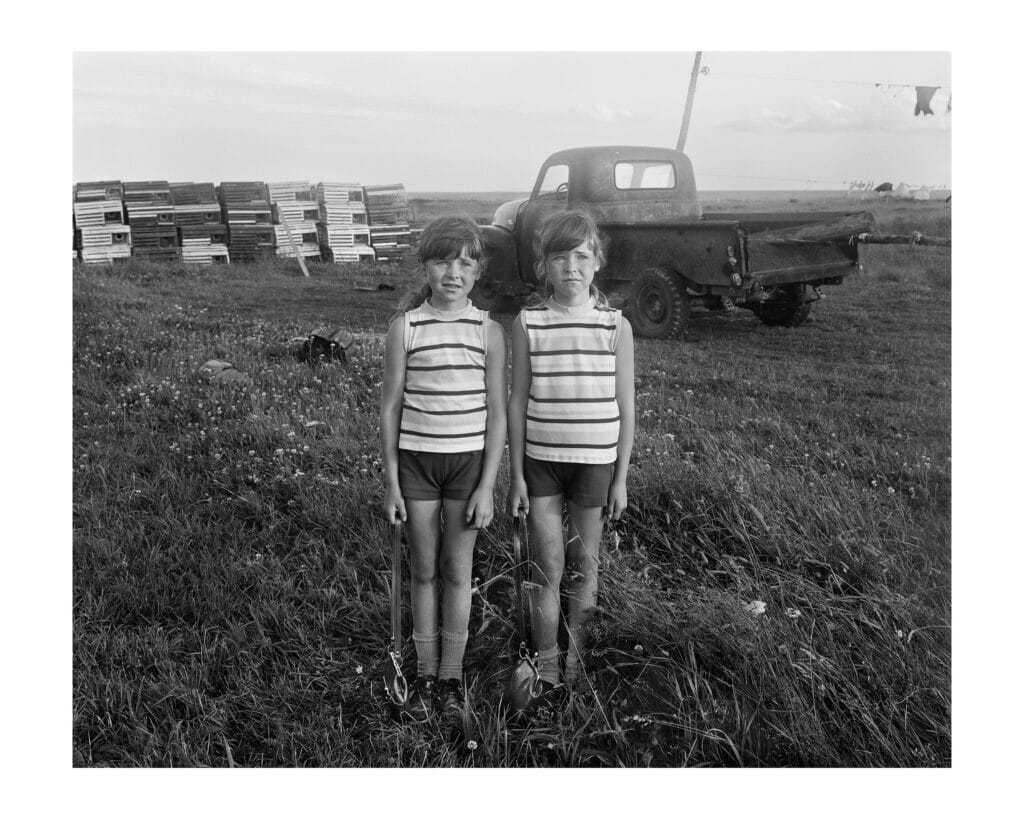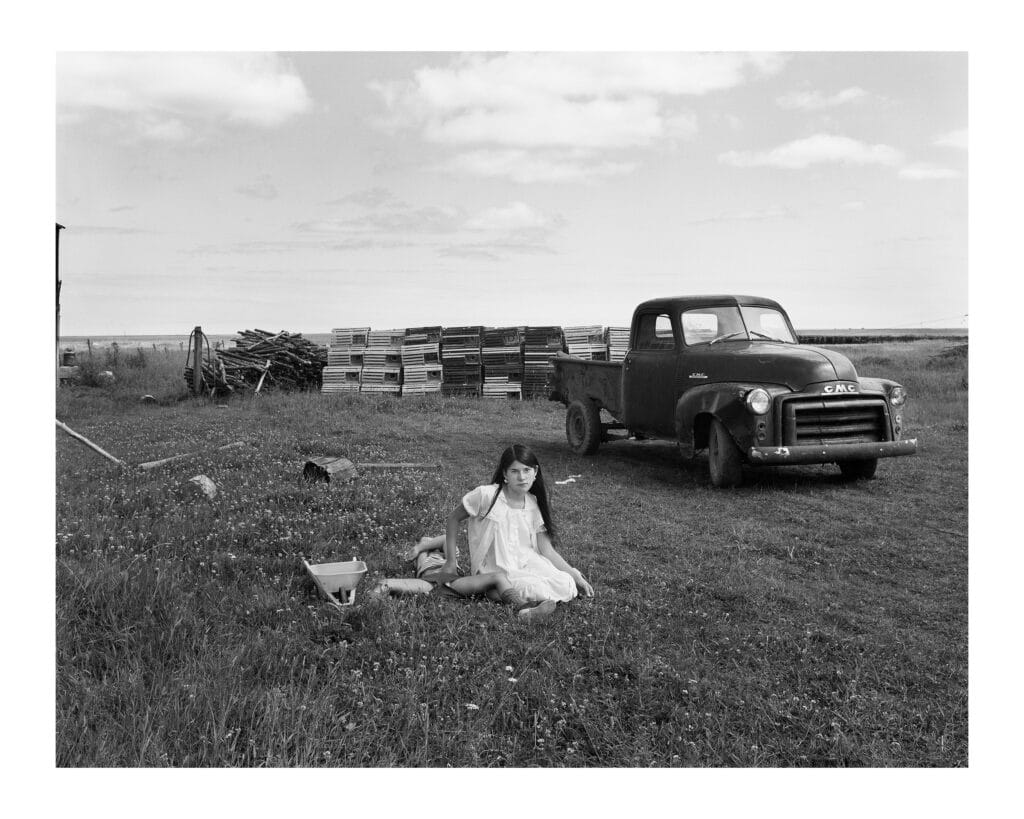Melinda Blauvelt, the first woman in Yale’s MFA photography program, studied under the guidance of Walker Evans, the seminal American chronicler of the everyday and visual voice of the overlooked. Influenced by Evans’ landmark work documenting rural America in the 1930’s, Blauvelt chose to spend the summer of 1972 living amongst the people in the small community of Brantville, New Brunswick. She embedded herself in this dot on a map and recorded the quiet, sturdy lives of people living at the edge of the Atlantic Ocean using just a view camera and black and white film.
Echoing the best of Evans — but with a distinctive voice of her own — the photographs in Brantville (Stanley Barker, 2023) contain a quiet brilliance and present a gifted artist at the beginning of her career, albeit one with an already-evident maturity. One of the gifts of working with a large format camera is its inherent lack of spontaneity when photographing people, the results of which record every surface and face with excruciating detail when handled correctly. Subjects are frequently asked to be still, to release all the air from their lungs which allows for a fuller engagement with the photographer’s intent.
Like many of Blauvelt’s photos, the first image in the book, Eva With Chantal, Murielle & Her Doll 1974, is enhanced by the soft, overcast light. The two young girls’ hair mimics that of the doll adding to the subtle sense of disquiet in the scene. Furthermore, the body language of the two girls, nestled in the arms of their mother, speaks strongly of their comfort in front of that 4×5 camera with a human head covered in a dark cloth at the rear.
For the photographer working with a view camera, it’s challenging to compose an image upside down and backwards, elements the sitters (or mostly standers in this case) don’t experience but nonetheless participate in as that process introduces respect between the artist and the subject. Plain, direct, and honest, Blauvelt’s photographs of Brantville — though shot between 1972 and 1974 — can easily allow one to imagine walking into the town today and slipping into the past.
In time and place
No images of a town hall or general store or church spire fill this elegant book, yet one can easily imagine the edges of these people’s expectations of the world, indistinct borders that exist just beyond the lonely cars and simple structures fleshing out the pieces of this puzzle. These are photographs that put one in a time and place that is wholly recognizable while at the same time being otherworldly; yet the sitters own their presence in the photographs.
In Francine & Teeth 1974, the young woman is proudly showing a set of false teeth in one hand with the other hand perched defiantly on her hip, while a riveting gaze stares right back through the lens onto the film. It’s as if she’s saying, “go ahead and ask me” about these teeth, “I dare you”.
Francine crops up again in several images, always solo, always punching back at the camera with defiance. And then she’s gone, with just a whiff of resemblance in the face of Bessie’s daughter in Bessie and Her Children 1974. Are Francine and Bessie’s daughter cousins? It’s these traces of a nagging similarity in the faces of the townspeople that gains traction as picture after picture reveal a thread of multiple generations’ continuity in a place well off the beaten path.
Images like Two Rabbits 1972 and Twins With Handbags 1974 show children in poses unexpected given commonly preconceived notions of childhood and their frequent responses to a camera. Layered with concern, apprehension, and a certain tension, the work exhibits layers of meaning to many of the images in this beautifully minimal book. With deep respect for the strength of this body of work, the publisher (Stanley Barker), the designer (Duncan Whyte), and the top-notch printer (EBS in Verona, Italy) have crafted a unique homage to a sliver of humanity existing in a time-capsule.
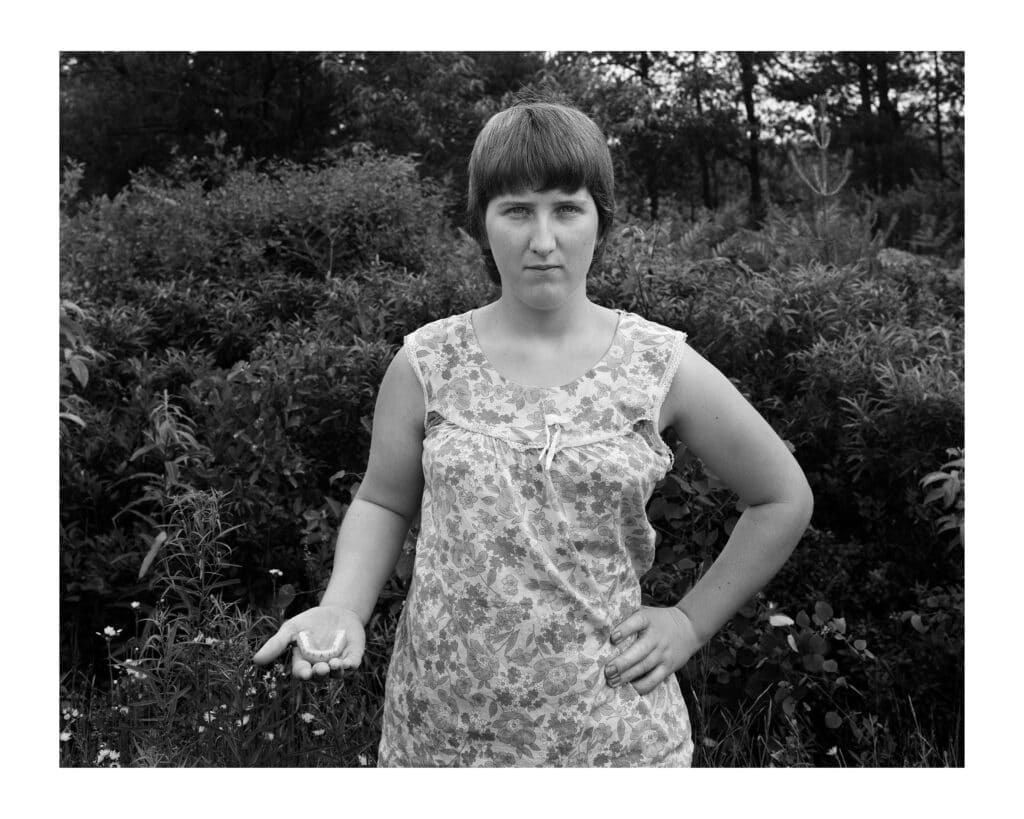
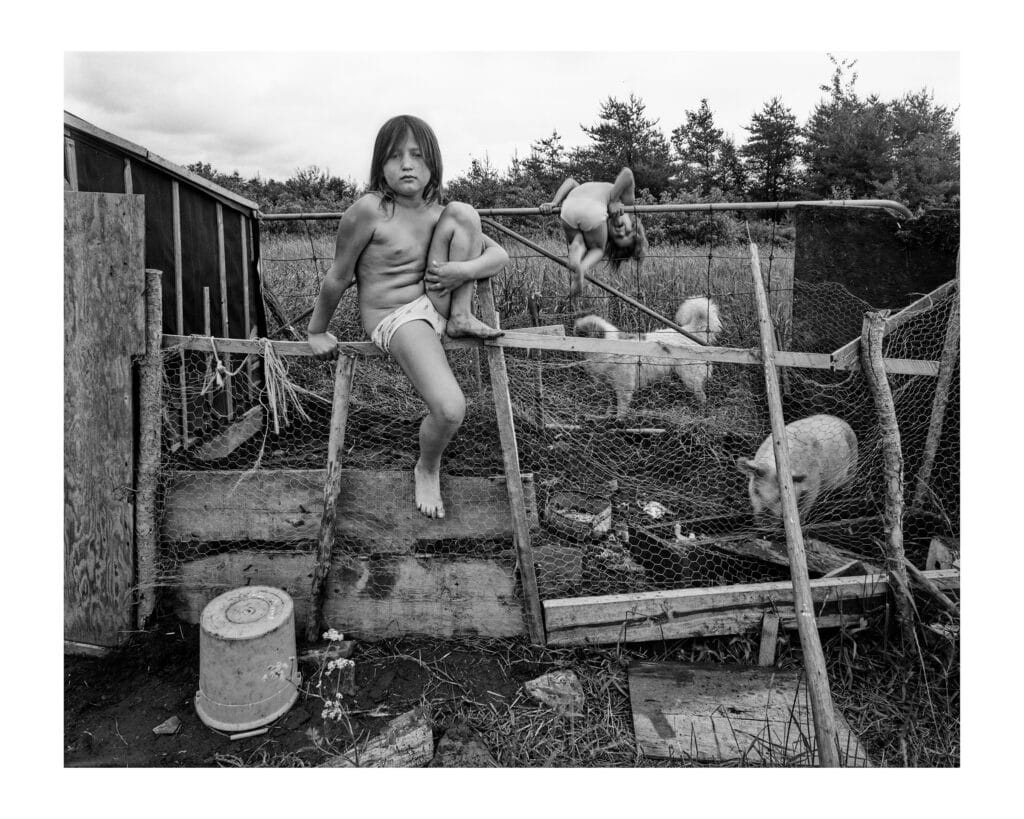
Of people’s story
When asked about the challenge (and power) of sequencing her first photo book considering a history of working alongside one of the geniuses of twentieth century photography, Blauvelt states “…Walker and I spent countless hours searching and discussing his archives and selecting the photographs he wanted in this exhibit. Watching Walker design the exhibit and finally sequence all of the photographs and signs was an education in seeing. So was walking with Walker on Chapel Street in New Haven and watching him pick up metal tabs from cans from the sidewalk and later make a collage of tabs. When Walker died, a sink in his bar at home was filled with his tabs along with a handwritten note “Please do not disturb the arrangement of tin beer caps in this washbowl”.
I learned a lot from others — William Bailey, Herbert Matter, Robert Ferris Thompson are a few — but none was as important an influence as my mentor Walker and his work. I had the good fortune to continue learning from him until our last discussion in Boston the morning before he died.”
Brantville is assertively about photography, pure, simple, and powerful. In what Magnum photographer Mark T. Power refers to as “the language of images”, Blauvelt’s choices in sequencing the fifty images in the book help tell the story of these individuals through their strong gazes and lack of artifice. Bill Shapiro (former editor-in-chief of LIFE Magazine) states that he “sees a LOT of images. I mean, a lot. Mostly on Instagram, which is where I first came across Blauvelt’s pictures. So, it was like scroll-scroll-scroll-STOP. There was something about the way the people in the pictures looked at the camera, something that’s hard to put your finger on but something real and tender and honest. For me, looking at Blauvelt’s pictures was like looking into the human heart.”
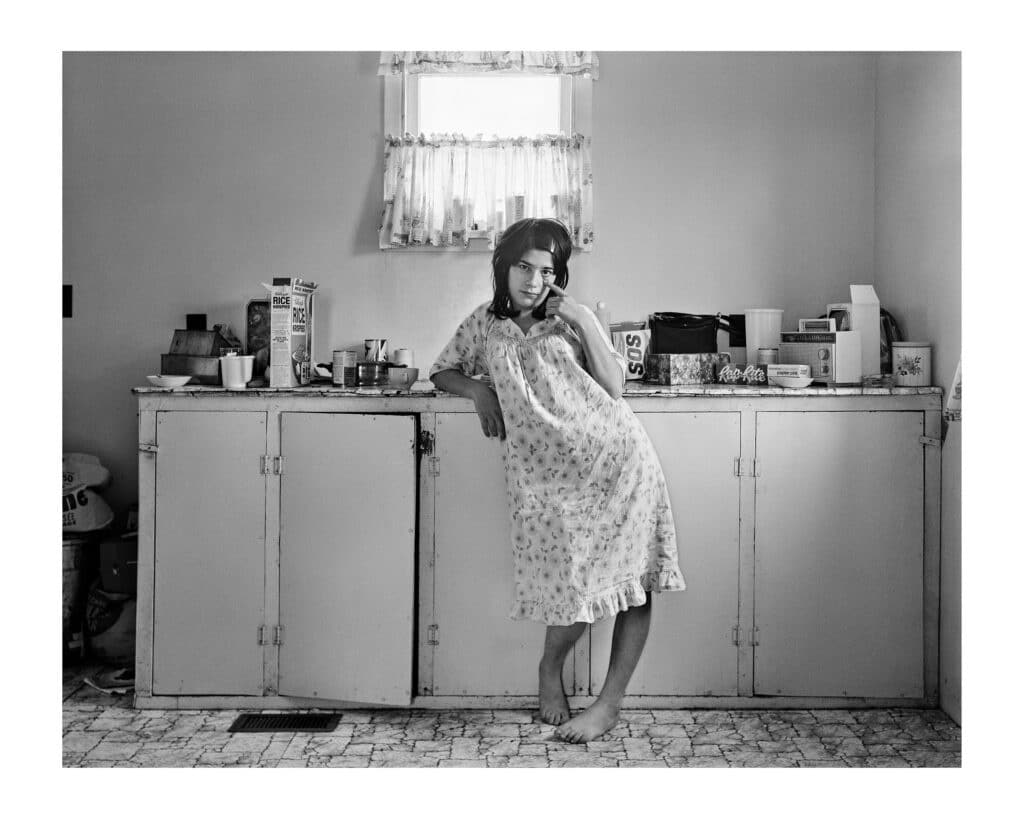
Note to the wary about the power of Instagram: After Shapiro’s sharing of Blauvelt’s work, several publishers reached out to her — repeat — reached out to her, a rare occurrence in our over-saturated world of images. It just goes to show that persistence with respect opens doors.

